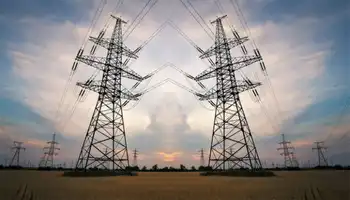Ontario Industrial users to pay 12 per cent more
TORONTO, ONTARIO - Ontario's Liberal government has given the price of electricity a gentle nudge that will moderate expected price increases for large industrial power users, but pump up revenues for Ontario Power Generation Inc.
The government's help in keeping a drag on power prices was gratefully acknowledged by chief executives of two of the province's biggest power users — Inco Ltd. and Dofasco Inc. However, power prices for big industrial users are still likely to rise about 12 per cent in the coming year, according to government estimates.
This spring, householders can expect to get rebates totalling $300 million on their hydro bills — between $50 and $100 per customer. The rebates come because consumers have been paying slightly more than the actual cost of power for the past year.
The provincial Liberal government decided last year that householders and small businesses would pay 4.7 cents a kilowatt hour for the first 750 kilowatt hours of power used each month, and 5.5 cents a kilowatt hour for all other power. A new price is due to be set sometime in the spring.
Consumers have paid about 5.2 cents a kilowatt hour on average for power under the new system, while the average market price has been 5.1 cents. That resulted in an overpayment of about $300 million. The final amount will be calculated at the end of March and consumers will get the refund through a credit on their hydro bill.
Opposition critics said the Liberals are still fumbling on policy.
"It's clear the McGuinty government still doesn't have a plan for Ontario's hydro-electricity system," said New Democratic Party leader Howard Hampton.
Duncan announced that power produced by Ontario Power Generation's regulated assets, its nuclear plants and major hydro-electric facilities, will be priced at 4.5 cents a kilowatt hour for the next three years.
The nuclear and big hydro plants churn out 41 per cent of Ontario's power.
But Duncan also said he'll put a one-year price cap of 4.7 cents a kilowatt hour on the output of OPG's "unregulated" assets — mostly small hydro facilities and coal-burning plants that produce another 33 per cent of the province's power.
Until now, the Liberals had indicated that a portion of OPG's production would be allowed to float up to open market rates.
But even with the new price caps, OPG's effective prices will go up.
That's because the new price caps replace an old system in which OPG had to refund a substantial chunk of revenue when prices exceeded 3.8 cents a kilowatt hour.
The old rebate system meant OPG was refunding industrial customers about $100 million a month, Duncan said. The new system will let the company keep about half of what it's now giving away.
That should allow OPG to earn about $350 million in profit each year, Duncan said. The profits will help pay down the debt left by the former Ontario Hydro.
Duncan told reporters the one-year price control on OPG's "unregulated" assets is a transitional measure to ease businesses toward higher prices.
"We want to make sure the fundamentals are in place, that there's predictability and stability," he said.
The new system "raises prices significantly, but it does so in a responsible fashion."
Chief executives Scott Hand of Inco and Don Pether of Dofasco said that, by holding OPG's prices in check, the government recognized "the need for competitive electricity costs to support the sustainability of manufacturing in Ontario."
Mike Kuriychuk, who chairs the Association of Major Power Consumers of Ontario, called the announcement "good news in the sense it produces some stability," although it will push up energy costs for business.
One concern is whether there is any significant electricity market left in Ontario. The province has set the price for OPG's 73 per cent of production; another 8 per cent is covered by long-term contracts with private generators.
"I have heard comments from marketers and investors that there's very little left of the open market," Kuriychuk said. "In the short term, at least, I think it will dampen the enthusiasm for new investment."
Duncan insisted he's "confident... people will still say this is a darn good place to invest."
Hampton said without the government's tinkering, power prices for big steel, automotive, paper and mining companies were set to rise by as much as 15 cents a kilowatt hour.
Conservative MPP Bob Runciman said that "only a Liberal would suggest that an 8 to 12 per cent (price) increase is good news."
Both opposition parties accused the Liberals of burying the announcement by making it the same day as the federal budget.
Tom Adams of Energy Probe also accused the government of "winging it" on energy policy.
He noted the announcement cloaked impending price increases that will stem from rate increases being sought by local hydro utilities, and other cost pressures such as the province's $1 billion program of installing new electricity meters in every home.
Prices could rise by 30 per cent or more by 2007 when all costs are included, he predicted.
Related News

Why electric buses haven't taken over the world—yet
LONDON - In lots of ways, the electric bus feels like a technology whose time has come. Transportation is responsible for about a quarter of global emissions, and those emissions are growing faster than in any other sector. While buses are just a small slice of the worldwide vehicle fleet, they have an outsize effect on the environment. That’s partly because they’re so dirty—one Bogotá bus fleet made up just 5 percent of the city’s total vehicles, but a quarter of its CO2, 40 percent of nitrogen oxide, and more than half of all its particulate matter vehicle emissions. And…




